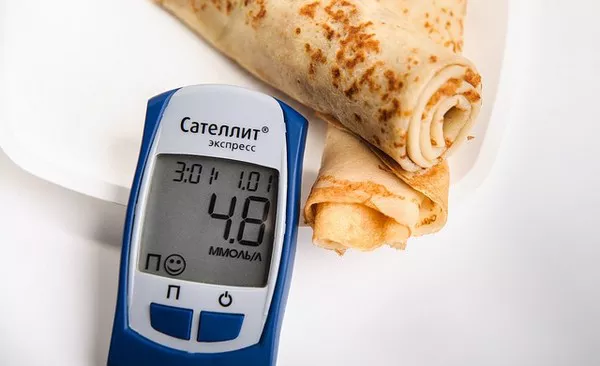Blood sugar, or glucose, is a crucial component of the body’s metabolic processes, serving as the primary source of energy for cells. Maintaining blood sugar levels within a normal range is vital for overall health. Abnormal blood sugar levels—either too high (hyperglycemia) or too low (hypoglycemia)—can lead to serious health complications over time. Monitoring blood sugar levels regularly is particularly important for individuals with diabetes or those at risk of developing the condition.
In this article, we will delve into what constitutes a “normal” blood sugar result, the factors that influence blood sugar levels, how to monitor blood sugar effectively, and the implications of abnormal results. By the end of this article, readers will have a comprehensive understanding of what normal blood sugar levels are and how to manage them for optimal health.
Understanding Blood Sugar: The Basics
Blood sugar refers to the amount of glucose circulating in the bloodstream at any given time. Glucose comes from the foods we eat, especially carbohydrates, and is used by the body for energy. The pancreas, an organ located behind the stomach, plays a key role in regulating blood sugar levels. It releases insulin, a hormone that allows glucose to enter cells and be used for energy. If the body becomes resistant to insulin or fails to produce enough of it, blood sugar levels can rise, leading to conditions like prediabetes and diabetes.
The body also relies on the liver to store and release glucose as needed. When blood sugar levels fall too low (hypoglycemia), the liver releases stored glucose to maintain energy levels. However, when blood sugar levels are too high (hyperglycemia), the body may struggle to process the excess glucose, leading to a range of health complications.
What Is Considered Normal Blood Sugar?
Blood sugar levels fluctuate throughout the day depending on food intake, activity levels, stress, and other factors. The following guidelines outline the typical ranges for normal blood sugar levels. It’s important to note that these values may vary slightly depending on the individual and the method of testing. However, the general reference ranges are as follows:
Fasting Blood Sugar Levels
- Normal: 70–99 mg/dL (3.9–5.5 mmol/L)
- Prediabetes (Impaired Fasting Glucose): 100–125 mg/dL (5.6–6.9 mmol/L)
- Diabetes: 126 mg/dL (7.0 mmol/L) or higher
Fasting blood sugar refers to a blood sugar measurement taken after an overnight fast (at least 8 hours without eating or drinking). This test is commonly used to assess an individual’s risk of diabetes. A fasting blood sugar level of 99 mg/dL or below is considered normal. A result between 100 and 125 mg/dL indicates prediabetes, while a result of 126 mg/dL or higher is consistent with diabetes. However, a single high fasting blood sugar result is not sufficient for a diagnosis of diabetes; additional testing is usually required.
Postprandial Blood Sugar Levels (After Eating)
- Normal: Less than 140 mg/dL (7.8 mmol/L) two hours after eating
- Prediabetes: 140–199 mg/dL (7.8–11.0 mmol/L)
- Diabetes: 200 mg/dL (11.1 mmol/L) or higher
Postprandial blood sugar refers to blood glucose levels measured after eating. Normally, blood sugar rises after eating, but it should not exceed 140 mg/dL two hours after a meal in healthy individuals. A postprandial blood sugar level between 140 and 199 mg/dL suggests prediabetes, while levels of 200 mg/dL or higher are indicative of diabetes. Again, further tests are typically necessary for a definitive diagnosis.
Hemoglobin A1c (HbA1c)
- Normal: Less than 5.7%
- Prediabetes: 5.7%–6.4%
- Diabetes: 6.5% or higher
The hemoglobin A1c test measures the average blood sugar level over the past 2 to 3 months. This test is commonly used for diagnosing and monitoring diabetes. A result of less than 5.7% is considered normal, while a result between 5.7% and 6.4% indicates prediabetes. A result of 6.5% or higher is diagnostic of diabetes. The A1c test is valuable because it reflects long-term blood sugar control and is not affected by short-term fluctuations.
Random Blood Sugar Levels
- Normal: Less than 140 mg/dL (7.8 mmol/L)
- Diabetes: 200 mg/dL (11.1 mmol/L) or higher, with symptoms of hyperglycemia
A random blood sugar test is taken at any time of the day, regardless of when the person last ate. This test can provide a snapshot of an individual’s blood glucose level. A result of 140 mg/dL or lower is generally considered normal, although values may vary depending on other factors such as activity and time since the last meal. A random blood sugar level of 200 mg/dL or higher, along with symptoms such as frequent urination, excessive thirst, and fatigue, may indicate diabetes.
Factors That Influence Blood Sugar Levels
Blood sugar levels are influenced by several factors, including:
Diet: The types of foods consumed have a significant impact on blood glucose levels. Foods high in carbohydrates, such as bread, pasta, and sugary snacks, can cause a rapid increase in blood sugar. On the other hand, foods high in fiber, lean proteins, and healthy fats can help stabilize blood sugar levels.
Physical Activity: Exercise helps improve insulin sensitivity and allows the muscles to use glucose for energy. Regular physical activity can lower blood sugar levels, while a sedentary lifestyle may contribute to insulin resistance and higher blood sugar levels.
Medications: Certain medications, such as corticosteroids, some blood pressure medications, and some antidepressants, can cause blood sugar levels to rise. On the other hand, diabetes medications like insulin and oral hypoglycemics are designed to lower blood sugar levels.
Stress: Stress triggers the release of hormones like cortisol and adrenaline, which can cause the liver to release glucose into the bloodstream. This can lead to temporary spikes in blood sugar, especially in individuals with diabetes or prediabetes.
Illness or Infection: When the body is fighting an illness or infection, blood sugar levels can become elevated due to the stress response. This is especially true for individuals with diabetes, who may have difficulty controlling blood sugar during illness.
Sleep: Poor sleep quality and sleep deprivation can affect insulin sensitivity and contribute to higher blood sugar levels. A consistent sleep routine is essential for maintaining stable blood glucose levels.
Age: As people age, they may become more prone to insulin resistance, which can lead to higher blood sugar levels. Older adults are also at greater risk for developing prediabetes and type 2 diabetes.
How to Monitor Blood Sugar
Monitoring blood sugar levels is essential for individuals with diabetes or prediabetes. There are several methods for measuring blood glucose, including:
Fingerstick Testing: The most common way to monitor blood sugar is through a fingerstick test using a blood glucose meter. This involves pricking the finger with a small lancet to obtain a blood sample, which is then analyzed by the meter. This method provides a quick and convenient way to check blood sugar levels at home.
Continuous Glucose Monitoring (CGM): CGM systems are worn on the body and measure blood sugar levels continuously throughout the day and night. These systems provide real-time data on blood sugar trends, allowing individuals to make timely adjustments to their diet, exercise, or medication. CGM is especially helpful for individuals with type 1 diabetes or those who experience frequent fluctuations in blood sugar.
A1c Testing: While fingerstick and CGM tests provide immediate feedback on blood sugar levels, the A1c test provides a long-term picture of blood sugar control. This test is typically performed in a healthcare setting every 2 to 3 months to monitor overall glucose management.
What Happens When Blood Sugar Levels Are Too High or Too Low?
Maintaining blood sugar within a normal range is crucial for overall health. Both high and low blood sugar levels can have serious consequences if left unaddressed.
Hyperglycemia (High Blood Sugar): Blood sugar levels above 180 mg/dL for extended periods can lead to complications such as nerve damage, kidney disease, cardiovascular problems, and vision loss. Chronic hyperglycemia is the hallmark of uncontrolled diabetes and can cause long-term damage to organs and tissues. Immediate symptoms of hyperglycemia include excessive thirst, frequent urination, fatigue, and blurred vision.
Hypoglycemia (Low Blood Sugar): Blood sugar levels below 70 mg/dL are considered low and can cause symptoms such as shakiness, dizziness, sweating, confusion, irritability, and fainting. Severe hypoglycemia can lead to seizures, loss of consciousness, and even death if not treated promptly. Hypoglycemia is most common in people with diabetes who take insulin or certain medications to lower blood sugar.
Conclusion: The Importance of Regular Blood Sugar Monitoring
Understanding what constitutes a normal blood sugar result is essential for individuals with diabetes, prediabetes, or anyone at risk of developing the condition. Regular monitoring of blood glucose levels allows individuals to make informed decisions about their diet, physical activity, and medication, ultimately helping to prevent complications associated with high or low blood sugar.
Normal blood sugar levels typically fall within specific ranges depending on the type of test (fasting, postprandial, A1c, etc.). Consistently maintaining blood sugar within these ranges is crucial for long-term health, and monitoring blood sugar regularly is a vital tool for achieving this goal.
If you have concerns about your blood sugar levels or need guidance on managing your glucose levels, it is essential to consult with a healthcare provider or a certified diabetes educator. They can provide personalized recommendations tailored to your health needs, helping you maintain stable blood sugar levels and reduce your risk of developing complications.
Related topics:
What’s the Normal Range of Blood Sugar in the Morning


























